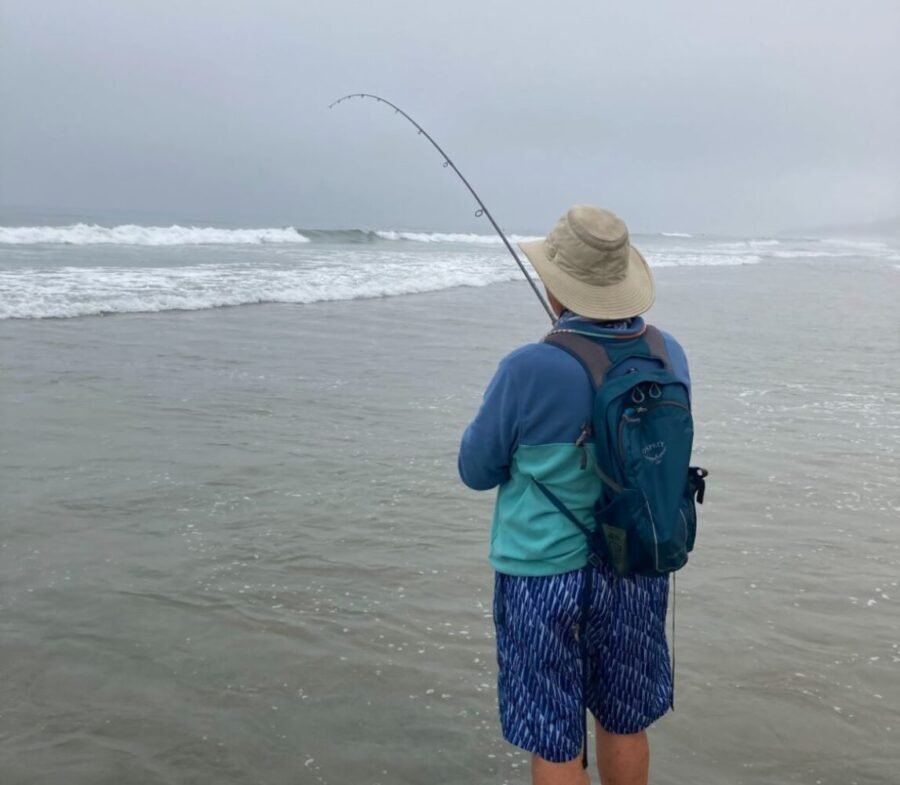Why Do Marine Layers Form? Understanding Coastal Fog and Surf Fishing

If you’ve ever experienced the cool, gray mornings along the California coast, you’ve likely encountered a marine layer. This weather phenomenon, characterized by low clouds and fog, is especially common in areas like San Diego. Understanding why marine layers form can provide insight into coastal weather patterns and help you anticipate changes in local conditions.
What Is a Marine Layer?
A marine layer is a mass of cool, moist air that forms over the ocean and becomes trapped beneath a layer of warmer air above. This setup, known as a temperature inversion, prevents the cooler air from rising, leading to the accumulation of moisture and the formation of low clouds or fog. These clouds often manifest as stratus or stratocumulus formations, creating the overcast skies typical of marine layers.
How Do Marine Layers Form?
Several factors contribute to the formation of marine layers:
- Cold Ocean Currents: Along the California coast, the California Current brings cold water from the Gulf of Alaska southward. This cold water cools the air directly above the ocean surface.
- Temperature Inversion: Under normal conditions, air temperature decreases with altitude. However, in a temperature inversion, a layer of warmer air sits above cooler air near the surface. This inversion traps the cool, moist air below, preventing it from rising and dispersing.
- Moisture Accumulation: The cool air near the ocean surface becomes saturated with moisture through evaporation. When this air reaches its dew point, the moisture condenses into tiny water droplets, forming clouds or fog within the marine layer.
- Onshore Winds: Sea breezes can push the marine layer inland, bringing the cool, cloudy conditions to coastal areas. This movement is often observed during the late spring and early summer months, leading to phenomena like “May Gray” and “June Gloom” .
Why Are Marine Layers Common in California?
California’s coastal geography and oceanic conditions make it particularly susceptible to marine layers. The combination of cold ocean currents, frequent temperature inversions, and prevailing onshore winds creates an environment where marine layers can form and persist. Additionally, the state’s coastal topography can trap the cool, moist air, prolonging the presence of marine layers in certain areas.
Impact on Local Weather and Activities
Marine layers can significantly influence local weather conditions:
- Temperature Regulation: The presence of a marine layer can keep coastal temperatures cooler, especially during the morning hours.
- Reduced Visibility: Fog within the marine layer can lead to decreased visibility, affecting transportation and outdoor activities.
- Air Quality: The trapped air can lead to the accumulation of pollutants near the surface, potentially impacting air quality.
- Recreational Planning: Understanding marine layers can help in planning activities like surfing, fishing, or beach outings, as conditions can change rapidly once the marine layer dissipates.
When Do Marine Layers Dissipate?

Marine layers typically dissipate as the sun rises and heats the Earth’s surface. This warming can break the temperature inversion, allowing the cool, moist air to rise and mix with the warmer air above, leading to the evaporation of clouds and fog. However, on days with strong inversions or limited sunlight, marine layers can persist into the afternoon or even all day.
How Do Marine Layers Affect Surf Fishing?
While great fishing days can happen in any conditions, I personally prefer when the marine layer sticks around throughout the morning. I’ve often noticed the bite slows down as soon as the marine layer burns off—and as a bonus, those overcast mornings tend to keep the crowds away, giving us anglers a bit more space. In the evening, however, I don’t think the presence of a marine layer matters quite as much.
There are a few reasons why marine layers might be good for surf fishing. The main one, in my opinion, is that fish likely feel less exposed. On the West Coast, the early morning sun shines from land toward the ocean, making it easier to see into the water—both for anglers and for birds overhead. That added visibility might make fish more cautious. But when there’s a thick marine layer, that sunlight is diffused, which can give fish a greater sense of cover.
Evening is a different story. Around sunset, there’s often glare bouncing off the water, which may actually encourage fish to feed more confidently, knowing they’re harder to spot.
All that said, the most productive times for surf fishing in my experience have consistently been dawn and dusk—those in-between moments when there’s just enough light for fish to hunt, but still plenty of visual cover.
Conclusion
Marine layers are a common and influential feature of coastal climates, particularly along the California coast. By understanding the conditions that lead to their formation, you can better anticipate and adapt to the cool, cloudy mornings they bring. Whether you’re a local resident or a visitor, recognizing the signs of a marine layer can enhance your appreciation of the dynamic coastal environment.